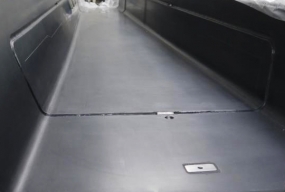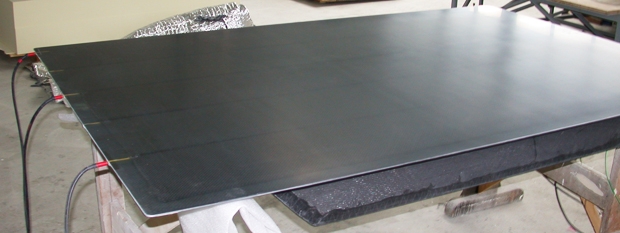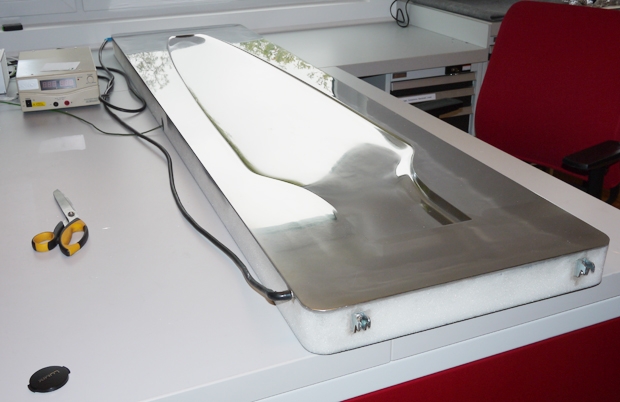Mould surfaces
 Surface with top layer-resin system.The top layer of the mould or surface is of central importance in heatable moulds.
Surface with top layer-resin system.The top layer of the mould or surface is of central importance in heatable moulds.
It should allow grinding and polishing and have a high edge strength.
In addition to mechanical strength, the top layer must also be chemically stable.
CRP moulds have very low thermal expansion. The thermal expansion coefficients of most gel coat systems are multiple times higher. This can result in high stresses in the surfaces during rapid cooling down of the moulds.
Good results are obtained with the highly filled top coat systems. For this, a uniform, as thin as possible application has a supporting effect in terms of durability.
Alternatives to the classic top coat resin system are infused surfaces made of glass, basalt or carbon veils . The non-woven fibres are used here as a fibre support to the resin-rich surface and in case a revision is necessary, they can be processed "step-free" by grinding. The displayable surface quality does not quite reach the level of a polishable resin covering layer system, but it is the right choice for many applications.
 Mould surface of non-woven glass fibre.
Mould surface of non-woven glass fibre.
Especially in the high temperature range (> 180 ° C), thermosetting plastics are subject to accelerated ageing. For long service life in this area, thin metallic top layers can be expedient. With respect to the thermal expansion, the alloy Ni36 (Invar) is ideal as a partner for carbon fibre moulding. The processing, however, is complex.
An alternative that is simpler to manufacture are electroplated nickel coatings. The thermal expansion is in a compensable range for CRP. An additional advantage of the metallic top layer lies in the very good thermal conductivity in parallel to the surface; this supports the even heat distribution on the surface.
 Electrodeposited thin nickel layer as mould surface.
Electrodeposited thin nickel layer as mould surface.



